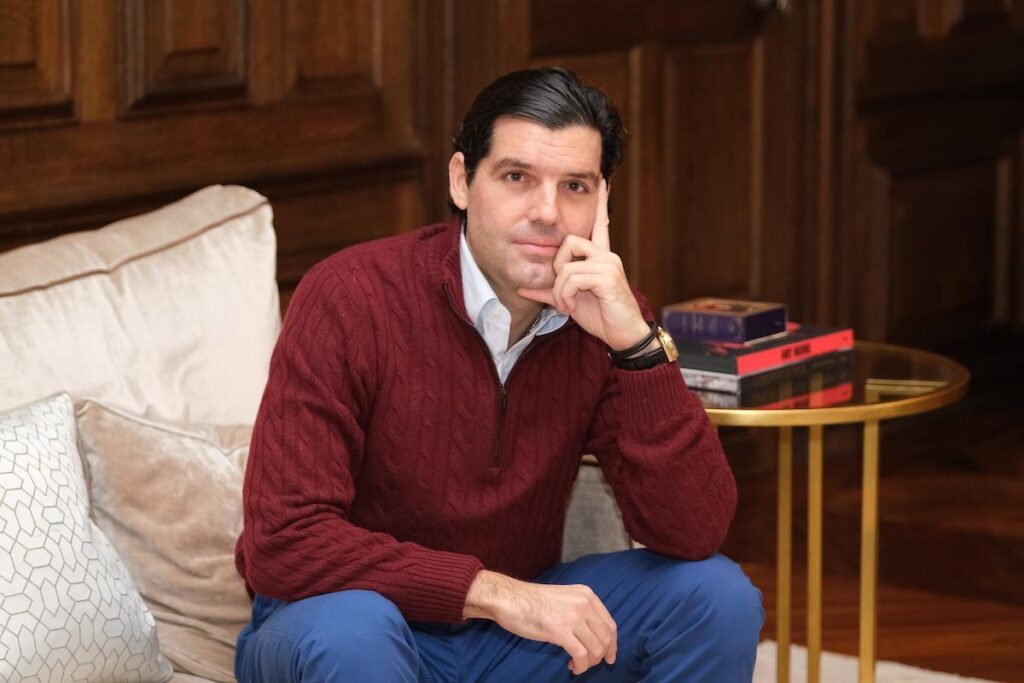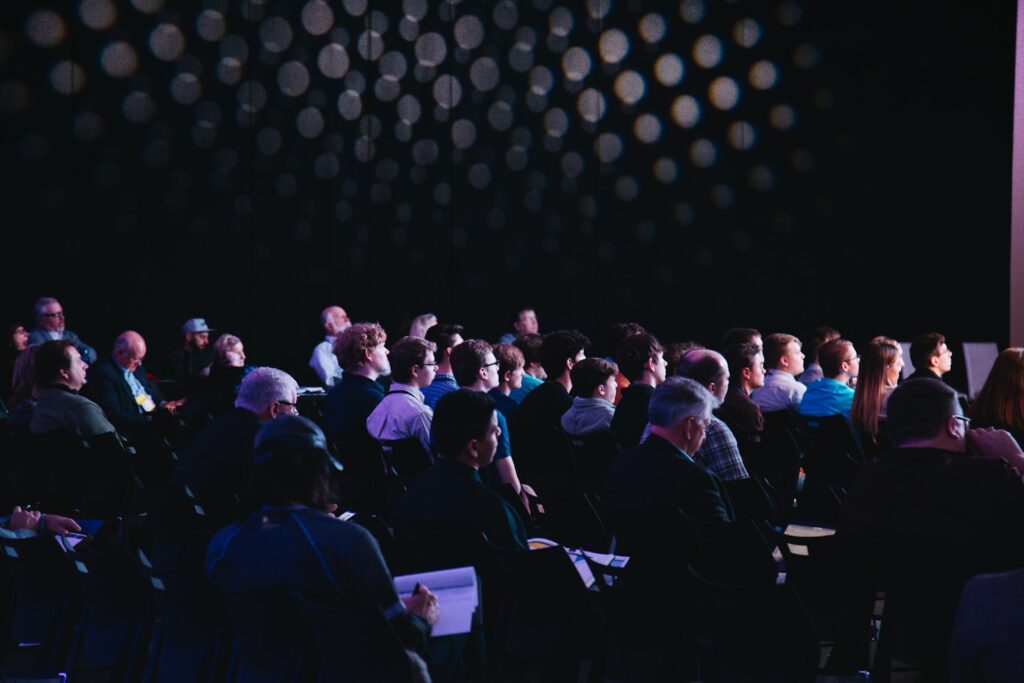The global eyewear industry stands on the brink of unprecedented transformation. Market analysts project the sector will reach $288.83 billion by 2033, driven by a fundamental shift from viewing eyewear as purely functional to embracing it as a fashion statement and technology platform. This evolution hasn’t happened overnight—it’s been carefully orchestrated by forward-thinking executives who recognized the potential years before it became obvious.
Alejandro Betancourt, president of Spanish eyewear company Hawkers, positioned himself at the forefront of this revolution. Under his leadership since 2016, Hawkers transformed from a modest startup into a global brand that now represents the third-largest sunglasses company worldwide. His approach anticipated many of the trends currently reshaping the entire industry, from sustainable materials and smart technology integration to direct-to-consumer marketing strategies that have become the new standard.
Digital Disruption Before It Was Mainstream
When Alejandro Betancourt took the helm at Hawkers, traditional eyewear companies relied heavily on brick-and-mortar retail partnerships and conventional advertising. The digital-first approach he championed seemed risky at the time but proved prescient as the industry shifted toward e-commerce and social media marketing.
“It was the right time for that kind of marketing and the right time for innovation into commodity-type product,” he explained. The timing advantage came from recognizing that sunglasses represented an ideal product for online sales—standardized sizing, affordable price points for experimentation, and high visual appeal for social media sharing. Current market data validates this approach, with consumer preferences increasingly favoring fashionable frames alongside premium lenses, transforming eyewear from practical necessity to style statement.
The 2025 eyewear landscape bears striking resemblance to the digital strategy Hawkers pioneered nearly a decade ago. Today’s trends include smart glasses with AI integration, such as Ray-Ban Meta glasses that combine smartphone functionality with traditional eyewear. These developments validate the technology-forward vision that guided Hawkers’ early digital innovations.
Betancourt’s marketing philosophy centered on reaching consumers directly through digital channels rather than relying on traditional retail intermediaries. “We moved to influencers, then we moved to the retail space,” he noted, describing how the company evolved its distribution strategy. This progression from pure digital to omnichannel reflects broader industry trends, with today’s successful eyewear brands requiring both online presence and physical touchpoints to serve diverse consumer preferences.
Sustainability Leadership Ahead of Industry Standards
Environmental consciousness has become a defining characteristic of modern consumer behavior, particularly among younger demographics who represent core customers for fashion eyewear brands. Alejandro Betancourt recognized this shift early, implementing sustainability initiatives at Hawkers years before green practices became industry expectations.
“We always have been conscious about sustainability, and we know that the market is shifting toward that direction,” he said. “Everyone is getting more conscious and wants to understand how the product they buy impacts their life, but also the world and environment as well.” This awareness led to concrete actions, including the development of sunglasses made exclusively from ocean plastic—an initiative that allowed customers to directly contribute to marine conservation through their purchases.
Current 2025 eyewear trends validate the importance of sustainable practices that Hawkers pioneered. Industry reports indicate that eco-friendly materials and sustainable manufacturing processes are becoming key differentiators for eyewear brands, with consumers increasingly willing to pay premium prices for environmentally responsible products. The market now rewards companies that integrate sustainability into their core business model rather than treating it as an add-on feature.
The emphasis on sustainable materials extends beyond ocean plastic to include recycled acetates, bio-based plastics, and even reclaimed wood frames. These innovations reflect growing consumer demand for products that align with personal values while maintaining style and functionality. Companies that established sustainability credentials early, like Hawkers under Betancourt’s leadership, enjoy competitive advantages as environmental considerations become standard purchase criteria.
Technology Integration and Smart Eyewear Evolution
The convergence of fashion and technology represents perhaps the most significant trend reshaping the eyewear industry. Smart glasses market development accelerated dramatically in 2024 and 2025, with major technology companies partnering with established eyewear manufacturers to create products that seamlessly blend style with functionality.
Alejandro Betancourt’s technology-forward approach at Hawkers established foundations for this evolution. The company’s early adoption of data analytics, personalized marketing, and direct-to-consumer platforms created infrastructure that supports current smart eyewear trends. While Hawkers focused primarily on fashion rather than technology integration, the digital marketing expertise and customer data capabilities developed under his leadership provide valuable assets for future technology partnerships.
Current smart eyewear developments include AI-powered features, augmented reality capabilities, and health monitoring functions integrated into fashionable frames. These advances represent natural extensions of the digital innovation mindset that Betancourt brought to Hawkers. The emphasis on user experience and seamless technology integration mirrors principles he applied to digital marketing and customer engagement strategies.
The evolution toward smart eyewear creates opportunities for established fashion brands to leverage their design expertise and customer relationships while partnering with technology companies for advanced features. This collaborative approach reflects the cross-industry thinking that characterizes successful modern business strategies.
Global Scaling and Market Disruption Strategy
The transformation of Hawkers from European startup to global brand under Alejandro Betancourt’s leadership provides a blueprint for international expansion that many eyewear companies now follow. His approach combined aggressive digital marketing with strategic geographic expansion, creating a template for rapid scaling in fashion-tech sectors.
The disruption came from bypassing traditional retail hierarchies and speaking directly to consumers through social media platforms. This strategy allowed Hawkers to build brand awareness and customer loyalty without the substantial upfront investments typically required for international retail expansion.
The success of this approach influenced broader industry practices. Today’s eyewear startups routinely launch with digital-first strategies, social media marketing campaigns, and direct-to-consumer business models. The playbook that seemed innovative when Hawkers implemented it has become standard practice for companies seeking rapid international growth.
Market dynamics in 2025 favor companies that can efficiently scale digital operations across multiple markets simultaneously. The 6.64% compound annual growth rate projected for the global eyewear market creates opportunities for brands that combine strong digital capabilities with appealing product design. Companies that master this combination can capture disproportionate market share during periods of rapid industry growth.
The lessons from Hawkers’ international expansion extend beyond eyewear to other fashion-tech categories where digital marketing, sustainability consciousness, and technology integration create competitive advantages. Alejandro Betancourt’s leadership during this transformation demonstrates how executives can anticipate industry trends and position their companies to benefit from technological and cultural shifts that reshape entire market categories.






